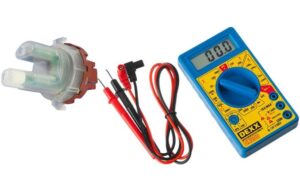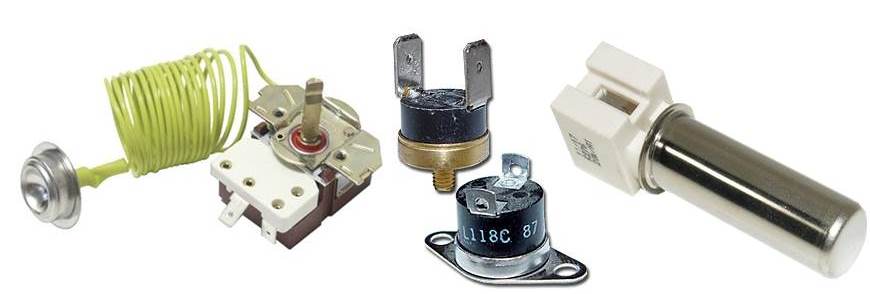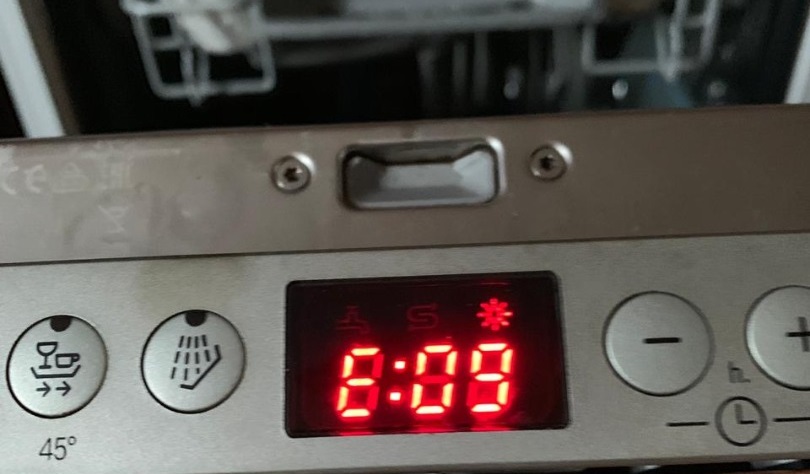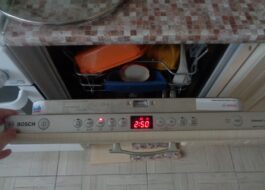Checking the dishwasher temperature sensor
 Modern dishwashers are so advanced that it is not scary to wash even the most fragile things in them, for example, dishes made of glass, porcelain or ceramics. However, even such advanced devices are not immune to breakdowns, for example, problems with water heating. If this happens, then you need to immediately check the temperature sensor of the dishwasher, which is what we will talk about today.
Modern dishwashers are so advanced that it is not scary to wash even the most fragile things in them, for example, dishes made of glass, porcelain or ceramics. However, even such advanced devices are not immune to breakdowns, for example, problems with water heating. If this happens, then you need to immediately check the temperature sensor of the dishwasher, which is what we will talk about today.
What types of temperature sensors are there?
Thermal sensors are needed to constantly maintain the desired level of water or air temperature. Nowadays, they are installed on many types of household appliances, including dishwashers, where these parts control the temperature of the water for washing dishes. There are 3 types of thermostats: gas-filled, bimetallic and thermistors (thermistors).
- Gas-filled sensors consist of a sensitive sensor, a cylinder with a tube filled with freon, and a control device. As the water temperature rises, the thermostat expands, thereby pressing on the plate, it opens the contacts and the water heater turns off.

- The principle of bimetallic devices is similar - it closes and opens contacts during heating and cooling of the plate, which is created from two metals with different temperature expansion coefficients.
- Today, devices are mainly equipped with thermistors, which, when the temperature of water or air increases, change the resistivity, transmitting a corresponding signal to the control board of the equipment. Next, the module turns off the water heating element.
It is believed that the thermistor is safer than its two analogues, since it does not have a mechanical circuit, which means there is less risk of failure.
How can you tell if the temperature sensor is broken?
Usually the temperature sensor is located in the tray of the “home assistant”. Finding it is not difficult, but many do not know what signals there are about a faulty part, and how exactly to check it. Most often, the thermistor reports a breakdown when there is either no heating at all or it is excessive. If the water in the dishwasher sometimes even heats up to boiling water, although the operating mode was not chosen, then there are definitely problems with the sensor.
If there are problems with strong heating, then during operation the body of the device will also become very hot and emit hot steam when the door is opened.
In this case, the thermistor needs an urgent check, since for some reason it has stopped sending signals to the electronic board, which does not turn off the water heater on time. Fortunately, most dishwashers can perform self-diagnosis, which will display an error code on the display. For example, in Miele equipment, problems with the temperature sensor are caused by errors “F01” and “F02”.
Testing the temperature sensor
First, you should test the functionality of the element, and only then buy a new part. Prepare tools for disassembling the device, as well as furniture, if your model is not free-standing, but built-in. To check, we also need a multimeter with a thermometer and a basin for water.
We need to check the thermistor for changes in resistance as the temperature decreases and increases. Connect the meter probes to the part under test and measure the resistance under different conditions.If everything is in order, then the values should be as follows:
- approximately 6000 Ohms at +20 degrees Celsius;
- about 1350 Ohms at +50 degrees;
- finally, 1200 Ohms at +60 degrees.
Keep in mind that different temperature sensors have different tolerance bands, so measurement deviations of 5-10% are normal.
For an accurate test, it is important to take two resistance measurements: one at room temperature, that is, at +20-25 degrees Celsius, and one when the water is heated to +50-60 degrees. For the second test, place the temperature probe in a bowl of hot water and wait about five minutes for the thermistor to reach the temperature of the liquid in the bowl.
If the test shows that the resistance decreases as the temperature rises, then the device is normal. However, if there is no resistance at all on the sensor, then it has burned out. Such parts are a reliable element that rarely requires replacement, so such a breakdown could occur due to manufacturing defects, mechanical damage, or natural wear and tear during prolonged use. In this case, there is nothing to do - you will have to change the thermistor.
How to replace a broken part?
When the thermistor needs urgent replacement due to a malfunction, the dishwasher will indicate this by displaying the error code “F01”. This is a signal not only that the temperature sensor is damaged, but also that heating is no longer available. Therefore, when the water does not heat up due to the fact that there is no signal in the thermistor circuit, the dishwasher will simply skip the heating and rinsing stages, blocking the heating and rinsing functions, and immediately start the user alert system - code “F01” on the display and a sound signal.
Replacing a faulty part is not difficult, so dishwasher owners can carry out all the work themselves. Our instructions will help you with this.
- We disconnect household appliances from the network and shut off the water supply.
- Drain the remaining water from the pan.
- At this stage, carefully remove the machine from the furniture if you have a built-in option.
- Unscrew the screws to remove the bottom panel.
- The sensor is most often built into the base of the heating element, so it is necessary to loosen the fastening of the water heating element with a key.
- Disconnect the wiring of the part.
It is advisable to take a photo of how the wires are connected, so that later there will be no problems with the reverse connection.
- We measure the resistance of the thermistor using a multimeter.
Then everything is simple - if the element is broken, then we buy a similar part and connect it, following the instructions in reverse order. After replacement, be sure to check the functionality of the household appliances, because if it turns out that a new sensor is installed, the heating element is also in order, but the water does not heat up again, then the reason may lie in a damaged electronic control module. In this case, you will have to call a service center specialist, because a novice will definitely not be able to cope with repairing the electronic unit.
Interesting:
Reader comments
- Share your opinion - leave a comment





















Add a comment